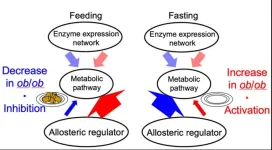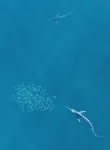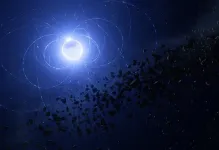BU researchers identify potential new subtype of chronic traumatic encephalopathy
One in six cases have a distinct distribution of disease, clinical profile
2024-02-26
(Press-News.org) FOR IMMEDIATE RELEASE, February 26, 2024
Contact: Gina DiGravio, 617-358-7838, ginad@bu.edu
BU Researchers Identify Potential New Subtype of Chronic Traumatic Encephalopathy
One in six cases have a distinct distribution of disease, clinical profile
(Boston)—Chronic traumatic encephalopathy (CTE) is a neurodegenerative disease defined by abnormal tau protein accumulating in a particular pattern in specific regions of the brain.
Studies to-date suggest CTE begins in the outermost layer of the frontal lobe, the neocortex, where it then spreads to connected brain regions. Later, in high-stage disease, there is involvement of deeper regions of the brain, like the medial temporal lobe and brainstem, and typically significant neocortical disease.
In a new study from the BU CTE Center, researchers found one in six individuals with high-stage CTE had surprisingly low levels of tau pathology in their neocortex. This newly identified form of CTE, called cortical-sparing CTE (CSCTE), instead showed a higher concentration of tau pathology in the individuals’ medial temporal lobe and brainstem regions.
"This pattern of tau pathology suggests that CSCTE may be a distinct subtype of CTE with a different underlying biology," explained first author Abigail Alexander, MD, MPH, who performed the research while a resident affiliated from the Warren Alpert Medical School at Brown University. "Furthermore, individuals with CSCTE were less likely to have dementia and had less severe cognitive impairment compared to those with typical CTE. However, they did tend to have earlier onset of behavioral and movement symptoms."
Brains from the Understanding Neurologic Injury and Traumatic Encephalopathy (UNITE) study underwent neuropathological assessment for CTE while online surveys and telephone interviews with next of kin, along with a review of clinical records were used to collect retrospective clinical information.
The researchers believe that further studies are needed to confirm the existence of CSCTE and to understand its clinical implications. However, they note that this finding could have important implications for the diagnosis and treatment of CTE.
"If CSCTE is confirmed to be a distinct subtype of CTE, it may be necessary to develop new diagnostic tools and treatment approaches that are specifically tailored to this form of the disease," added corresponding author Thor Stein, MD, PhD, a neuropathologist at VA Boston and Bedford Healthcare Systems and associate professor of pathology & laboratory medicine at Boston University Chobanian & Avedisian School of Medicine. “This could help us understand why people with CTE can have different symptoms and ultimately lead to improved outcomes."
These finding appear online in the journal Acta Neuropathologica.
About the BU CTE Center
The BU CTE Center is an independent academic research center at Boston University Avedisian & Chobanian School of Medicine. It conducts pathological, clinical and molecular research on CTE and other long-term consequences of repetitive brain trauma in athletes and military personnel. For people considering brain donation, click here. To support its research, click here.
Funding for this study was provided by the United States Department of Veterans Affairs, Veterans Health Administration, Veterans Affairs Biorepository (BX002466); BLRD Merit Award (I01BX005933 (CTE-AD), I01BX005161 (ALS; Stein); Alzheimer’s Association (NIRG-305779, NIRG-362697); National Institute of Aging (P30AG072978-McKee, R01AG075876- Stein); National Institute of Neurological Disorders and Stroke (U54NS115266-McKee, U01NS086659, K23NS102399, RF1NS122854- Alosco); and the Concussion Legacy Foundation. This work was also supported by unrestricted gifts from the Andlinger Foundation and WWE. This material is the result of work supported with resources and the use of facilities at the Bedford VA Healthcare System.
END
ELSE PRESS RELEASES FROM THIS DATE:
2024-02-26
EMBARGOED by Cell until 11 am ET Feb. 26, 2024
Contact: Gina DiGravio, 617-358-7838, ginad@bu.edu
BU Researchers Describe New Technological Platform to
Accelerate Drug Development
(Boston)— Drug development is currently an extremely long, expensive and inefficient process. Findings generated in a lab are often very hard to replicate once translated into animal models or in humans.
A family of pharmacological targets, on which approximately 35% of FDA-approved drugs work, consists of receptors at the surface ...
2024-02-26
One of the most striking examples of gut plasticity can be observed in animals that are exposed to prolonged periods of fasting, such as hibernating animals or phyton snakes that goes for months without eating, where the gut shrinks with as much as 50%, but recovers in size following a few days of re-feeding. Importantly, the capacity of the gut to undergo resizing is broadly conserved. Hence, in humans, an increase in gut size is observed during pregnancy, which facilitates the uptake of nutrients to support the growth of the fetus.
The Colombani Andersen ...
2024-02-26
What if it were possible to use a scientific model to predict hate crimes, protests, or conflict? Researchers at McGill University and University of Toronto have begun the groundwork to develop a formal predictive model of prejudice, similar to meteorological weather predictions.
The model can be explained by the equation: Prejudice = Threat – Contact + Identification, “with some numbers involved,” says lead author Eric Hehman, Associate Professor in the Department of Psychology and lead author of a new study published in Psychological ...
2024-02-26
Imagine a world where your smartphone can detect your mood just by the way you type a message or the tone of your voice. Picture a car that adjusts its music playlist based on your stress levels during rush hour traffic. These scenarios are not just futuristic fantasies. They are glimpses into the rapidly evolving field of affective computing. Affective computing is a multidisciplinary field integrating computer science, engineering, psychology, neuroscience and other related disciplines. A new and comprehensive review on affective computing was published Jan. 5 in Intelligent ...
2024-02-26
AI decision-making is now common in self-driving cars, patient diagnosis and legal consultation, and it needs to be safe and trustworthy. Researchers have been trying to demystify complex AI models by developing interpretable and transparent models, collectively known as explainable AI methods or XAI methods. A research team offered their insight specifically into audio XAI models in a review article published Jan. 23 in Intelligent Computing, a Science Partner Journal.
Although audio tasks are less researched than visual tasks, their expressive power is not less important. Audio signals are easy to understand and communicate, as they typically depend less on expert explanations ...
2024-02-26
JMIR Publications is pleased to announce a new theme issue in JMIR Neurotechnology exploring brain-computer interfaces (BCIs) that represent the transformative convergence of neuroscience, engineering, and technology. The peer-reviewed journal aims to bridge the gap between clinical neuroscience and information technology by providing a platform for applied human research in the field of neurology.
JMIR Neurotechnology welcomes submissions from scientists, clinicians, and technologists. PhD students and early career researchers are ...
2024-02-26
Your liver plays a vital role in your metabolism, the biological process which converts food into energy. We know that being overweight can negatively affect metabolic activity, but not exactly how. To better understand this, researchers compared the livers of mice which were a typical weight with mice which were obese. They were surprised to find that biological regulation of metabolic activity, after a period of feasting and fasting, was reversed between them. In typical mice, allosteric regulation (the process which controls metabolism) was inhibited during feeding and activated when fasting. However, ...
2024-02-26
Striped marlin are some of the fastest animals on the planet and one of the ocean’s top predators. When hunting in groups, individual marlin will take turns attacking schools of prey fish one at a time. Now a new study reported in the journal Current Biology on February 5 helps to explain how they might coordinate this turn-taking style of attack on their prey to avoid injuring each other. The key, according to the new work, is rapid color changes.
“We documented for the first time rapid color change in a group-hunting predator, the striped marlin, as groups of marlin hunted schools of sardines,” says Alicia Burns of Humboldt University ...
2024-02-26
When a star like our Sun reaches the end of its life, it can ingest the surrounding planets and asteroids that were born with it. Now, using the European Southern Observatory’s Very Large Telescope (ESO’s VLT) in Chile, researchers have found a unique signature of this process for the first time — a scar imprinted on the surface of a white dwarf star. The results are published today in The Astrophysical Journal Letters.
“It is well known that some white dwarfs — slowly cooling embers of stars like our Sun — are ...
2024-02-26
About The Study: This survey study found that primary care pediatricians felt less prepared to manage adolescents’ opioid use disorder (OUD) than alcohol, cannabis, or e-cigarette use and were more likely to refer them to offsite care. These results reveal an opportunity for greater workforce training in line with a 2019 survey showing fewer than 1 in 3 pediatric residency programs included education on prescribing OUD medications.
Authors: Scott E. Hadland, M.D., M.P.H., M.S., of Mass General for Children in Boston, is the corresponding author.
To access the embargoed study: Visit our For The ...
LAST 30 PRESS RELEASES:
[Press-News.org] BU researchers identify potential new subtype of chronic traumatic encephalopathy
One in six cases have a distinct distribution of disease, clinical profile




